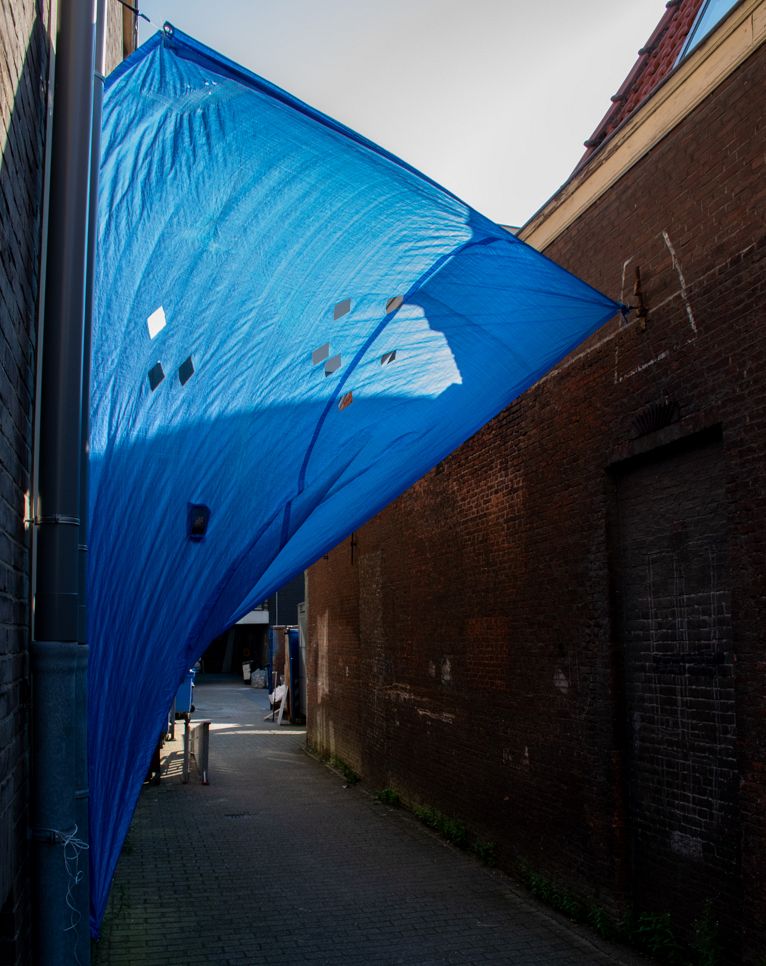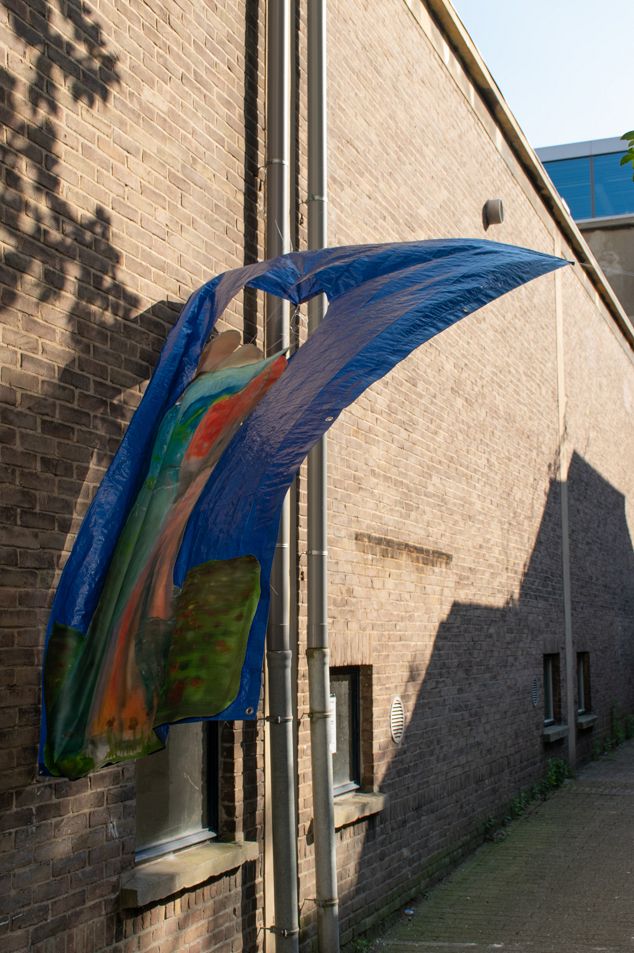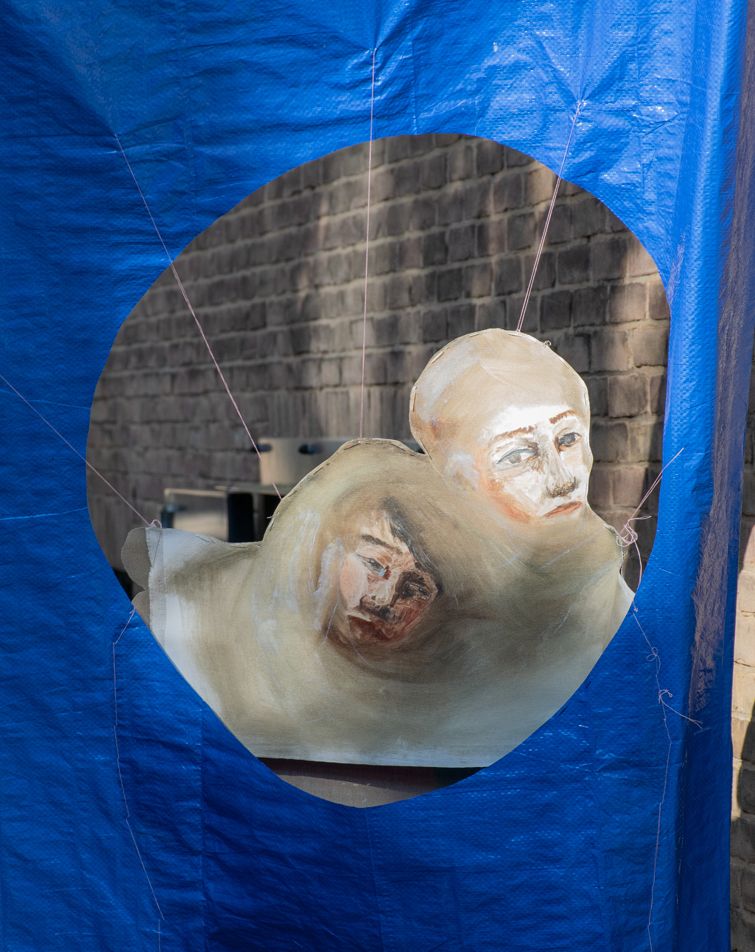
This body of paintings is an exploration of personal narratives as well as a question towards the tradition surrounding the consumption of paintings as works of art.
"The only way out is through", a title inspired by a poem from Robert Frost, refers both to the necessity of perseverance in the face of difficulty, and the importance of confrontation and renewal in a contemporary art space where paintings may embody a form of cultural inaccessibility.
The four paintings are installed in the back alley of the academy, as well as the adjacent room used mainly for facility purposes. These spaces, designed and used primarily for transportation and storage of materials, detach the paintings from the traditional gallery space. The paintings are installed spatially, outdoors, and evolve in all conditions for the duration of the exhibition may it be wind, rain, or sunshine.
Two of the paintings depict landscapes, each being an attempt at recreating the experience of the sublime that give weight to any landscape. This is done either through material qualities in the representation of the landscape, or the exploration of scale in the installation of the painting.
Another work, installed under a shed, is a self portrait of the artist composed of elements extracted from previous paintings. A work of introspection through the visual languages acquired through the artist’s studies.
The last painting, a two-sided double portrait, pushes the spatialisation of painting even further by inviting the audience to consider the painting spatially as well as graphically. The painting depicts what brings us together.
As the works are installed in response to their spaces, the indoor painting observes the traditions imposed by the traditional academic art space, while the works installed outdoors are more liberated.
On the back of one of the paintings is written the following short text:
“A landscape inspired by my childhood, memories of a world where everything was still sublime and bigger than my person.
Sometimes, I relive in my dreams this physical, crushing, and humbling relationship.
The beauty of the landscape is its power to send us back to our childhoods.”




